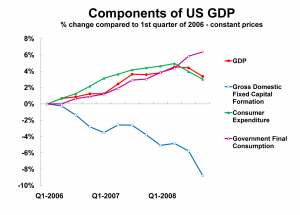Many of you know that I’m a big supporter of local businesses. Recently I’ve noticed I’m doing a lot of business with a company that is fifteen miles from my home. That company is Google.
Google has a number of great products and employs many of my neighbors. They are also a pre-eminent global business with users and customers in every corner of cyberspace and the globe.
As I upgraded my Grand Central account to Google Voice, I took inventory of the Google Products I use every day. They include:
- Google Adsense

- Google AdWords
- Google Alerts
- Google Analytics
- Google Chrome
- Google Mail
- Google Maps
- Google Reader
- Google Search
- Google Talk
- Google Toolbar
- Google Voice
- Google Webmaster Tools
- 800-GOOG-411
The interesting thing about my relationship with Google is that I pay them for one product (Google AdWords) they pay me for one product (Google Adsense). Everything else is no charge. Privacy advocates point out that I’m “paying” for these services by disclosing personal information about myself. My position is a bit different. I’ve accepted that there is no meaningful privacy on the Internet. Everything we do on the Internet is closely monitored and analyzed so that someone can make an incremental buck.
In most parts of America and the world, Google is not a local business. It is a global competitor that is out-competing local institutions from newspapers to software companies with a unique business model. I’m able to reconcile my buy local bias with heavy usage of Google technology. Their products are good, they feed the local economy and they inspire innovation and excellence. I guess I’m comfortable living in a very competitive neighborhood.
 Before drilling down into the tactics, I need to climb up on my strategic marketing soapbox. While your tactics might change during a recession, your value proposition, message and target ought to be reasonably stable. Much of marketing is about the medium to long term. While your customers may have reduced budgets, their needs, their trusted vendor/channel relationships and your product benefits ought to be reasonably identical in good times as well as bad.
Before drilling down into the tactics, I need to climb up on my strategic marketing soapbox. While your tactics might change during a recession, your value proposition, message and target ought to be reasonably stable. Much of marketing is about the medium to long term. While your customers may have reduced budgets, their needs, their trusted vendor/channel relationships and your product benefits ought to be reasonably identical in good times as well as bad.

